January 2025
The global internal combustion engine market demand is calculated at 2,37,045.81 thousand units in 2025 and is forecasted to reach around 5,19,080.90 thousand units by 2034, accelerating at a CAGR of 9.11% from 2025 to 2034. The Asia Pacific internal combustion engine market demand surpassed 99,559.24 thousand units in 2025 and is expanding at a CAGR of 9.24% during the forecast period.
The global internal combustion engine market demand was estimated at 2,16,995.43 thousand units in 2024 and is predicted to increase from 2,37,045.81 thousand units in 2025 to approximately 5,19,080.90 thousand units by 2034, expanding at a CAGR of 9.11% from 2025 to 2034.
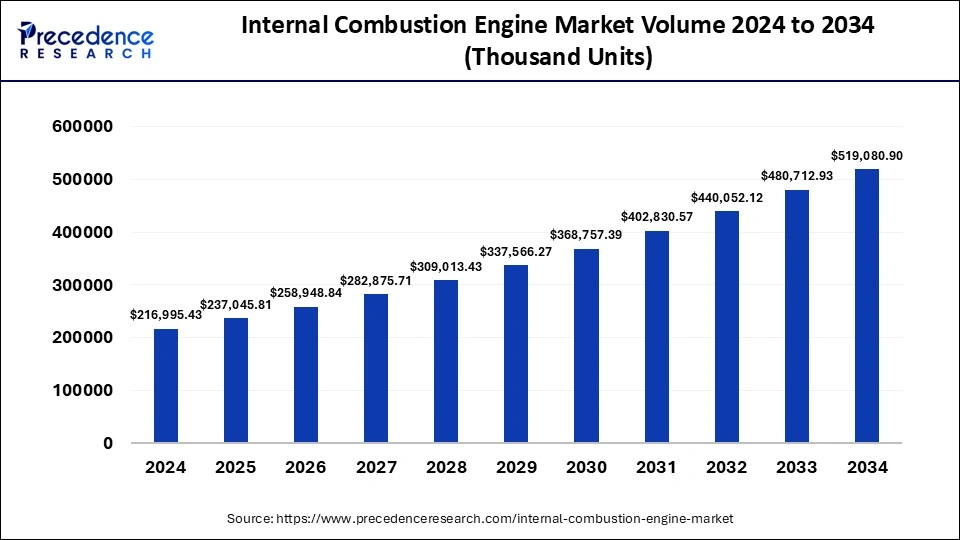
The Asia Pacific internal combustion engine market volume was estimated at 91,138.08 Thousand Units in 2024 and is projected to reach 2,20,609.38 Thousand Units by 2034, registering a CAGR of 9.24% from 2025 to 2034.
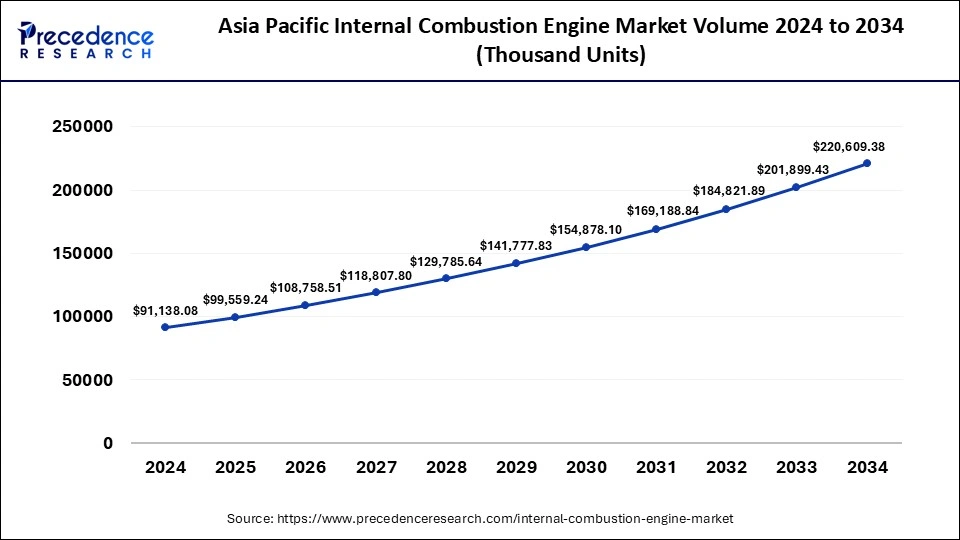
Asia Pacific held the dominant share of the internal combustion engine market in 2024. The growth is attributed to the presence of major automotive manufacturers, increasing demand for both passenger and commercial vehicles, rapid growth of the aviation industry, fast-paced industrialization, rising adoption of agricultural mechanization, increased vehicle production, and a growing demand for fuel-efficient engines. However, the lack of charging infrastructure for electric vehicles and the high cost of electric motors are anticipated to be key drivers of market growth in the region.
In addition, developing countries are significant contributors to the market, such as Japan, China, and India, due to the rising demand for ICEs from various automotive and non-automotive applications such as cars, motorcycles, aircraft, boats, diesel generators, lawnmowers, motorcycles, locomotives, ships, and airplanes is anticipated to propel the internal combustion engine market growth in the region during the forecast period.
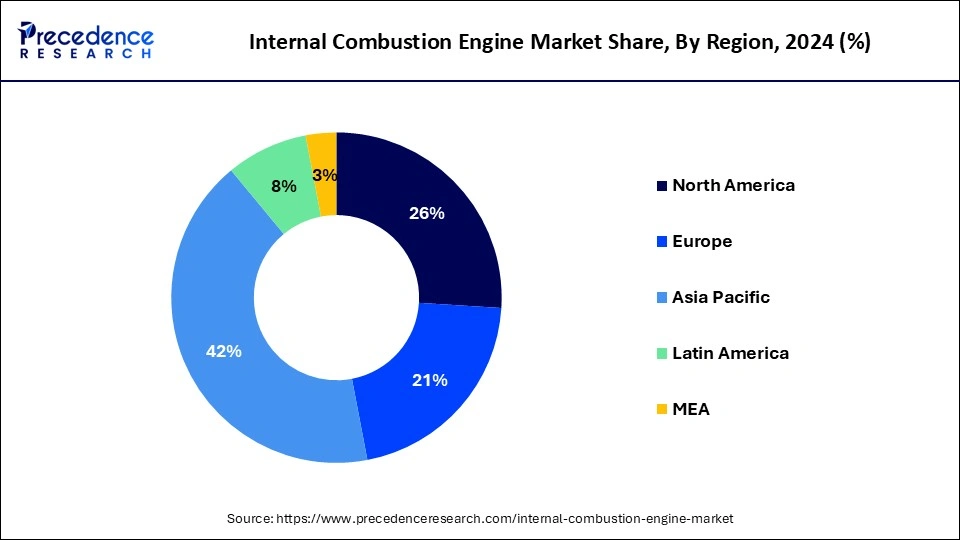
North America is anticipated to grow notably in the internal combustion engine market during the forecast period. North America is home to prominent automobile manufacturers, including Caterpillar, AGCO Corporation, General Motors Company, Ford Motor Corporation, and others. The growth of the region is driven by the rising demand for hybrid electric vehicles, the rise in industrial activity, the rising focus on innovations in engine technology, the increasing demand for passenger and commercial vehicles, and the growing demand for effective and high-performance engines in industrial applications. Moreover, automotive companies are emphasizing redefining the design and volume of the ICE, making it smaller, lightweight, and more efficient to boost performance, bolstering the market growth. Thus, this is expected to propel the market growth in the region during the forecast period.
Generally, combustion is the chemical process of releasing energy from a fuel and oxidizer mixture. An internal combustion engine is a heat engine that generates power for various applications, particularly in transportation. An internal combustion engine produces energy via burning oil, fuel, or petrol with air in a confined space, and then the hot gaseous fuel is created to power the movement of engine parts. In the era of modern transportation and industrial machinery, the internal combustion engine plays a crucial role in driving vehicles and machinery. Internal combustion Engines (ICE) have gained immense popularity across various sectors, such as aerospace, industrial, and automotive.
Internal Combustion Engine Market Split of Off-highway Units
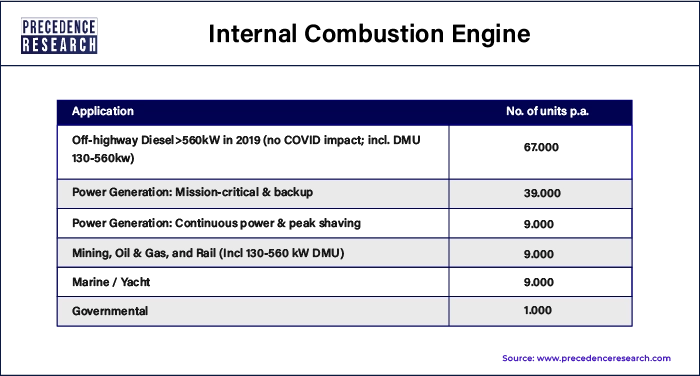
| Report Coverage | Details |
| Market Volume by 2034 | 4,80,712.93 Thousand Units |
| Market Volume in 2025 | 2,16,995.43 Thousand Units |
| Growth Rate from 2025 to 2034 | CAGR of 9.24% |
| Largest Market | Asia Pacific |
| Base Year | 2024 |
| Forecast Period | 2025 to 2034 |
| Segments Covered | Fuel Type, End-use, and Regions |
| Regions Covered | North America, Europe, Asia-Pacific, Latin America, and Middle East & Africa |
The rapid expansion of the automotive sector
The rapid expansion of the automotive sector globally is anticipated to propel the growth of the internal combustion engine market during the forecast period. An internal combustion engine (ICE) is a type of heat engine that converts the chemical energy of the fuel into mechanical energy. ICE is a common form of heat engine, and it is widely used in vehicles, trains, boats, ships, motorcycles, airplanes, and other industrial machines as the primary power source.
Several government initiatives to control emissions and fuel efficiency are encouraging the development of cleaner ICE engines for vehicles. Additionally, the rising consumer inclination towards diesel engines over gasoline engines due to their reliability, durability, and superior fuel economy for long distances is anticipated to propel the internal combustion engine market growth.
Rising environmental concerns
The rising environmental concerns are projected to hamper the growth of the global internal combustion engine market in the coming years. The surge in environmental awareness about the long-term ecological impacts of fossil fuels is likely to influence the consumer to shift towards greener alternatives. Fossil fuel has limited reserves, which increases the fuel prices.
The stringent emissions regulations compel manufacturers to invest in advanced emissions control technologies, which can be expensive and technically challenging. In addition, the increasing adoption of electric vehicles due to zero emission of fumes from electric vehicles is likely to limit the expansion of the internal combustion engine market.
Rising adoption of cutting-edge technologies
The increasing adoption of cutting-edge technologies is projected to offer lucrative growth opportunities for the growth of the internal combustion engine market in the coming years. Technological improvement offers evolution to the internal combustion engine design, making it more powerful and efficient while using less fuel. ICE plays an indispensable role in the automotive industry's evolution.
The introduction of advanced technology, such as low-temperature combustion engines, has gained immense popularity in the market. Therefore, the increasing investment in engine technology innovation creates a robust manufacturing base and is anticipated to contribute to the growth of the internal combustion engine market.
The petroleum segment accounted for the dominating share of the internal combustion engine market in 2024 and is expected to grow at the fastest rate during the forecast period. Petroleum-based fuels such as gasoline and diesel are the primary energy sources for internal combustion engines. Petroleum internal combustion engines make less vibration and noise. Petroleum fuels are highly used in the market. Diesel fuels are required in buses, trucks, and large industrial and agricultural machinery. Gasoline is heavily used in passenger cars and light commercial vehicles. There are several advantages offered by gasoline engines, such as being cheaper, lightweight, fewer emissions generation, and more efficient. Therefore, the increasing number of ICE-powered vehicles increases the demand for petroleum-based fuels.
The natural gas segment is expected to gain a significant share of the internal combustion engine market during the forecast period. Natural gas, such as Compressed Natural Gas (CNG), Liquefied Natural Gas (LNG), and others. Natural gas is gaining momentum owing to its lower emissions in comparison with conventional petroleum fuels, reduced environmental impact, and promoted sustainability. Thus, the rising number of natural gas vehicles, especially in regions with stringent government emission standards, is projected to make a substantial contribution to the segment's growth.
The automotive segment held the largest share of the internal combustion engine market in 2024 and is expected to sustain its position throughout the forecast period. Automotive market players are highly investing in developing efficient ICE to improve fuel economy, reduce emissions, and boost performance. The primary focus of automotive manufacturers is to achieve high returns on manufacturing investments. Such factors are expected to boost the segment’s growth during the forecast period.
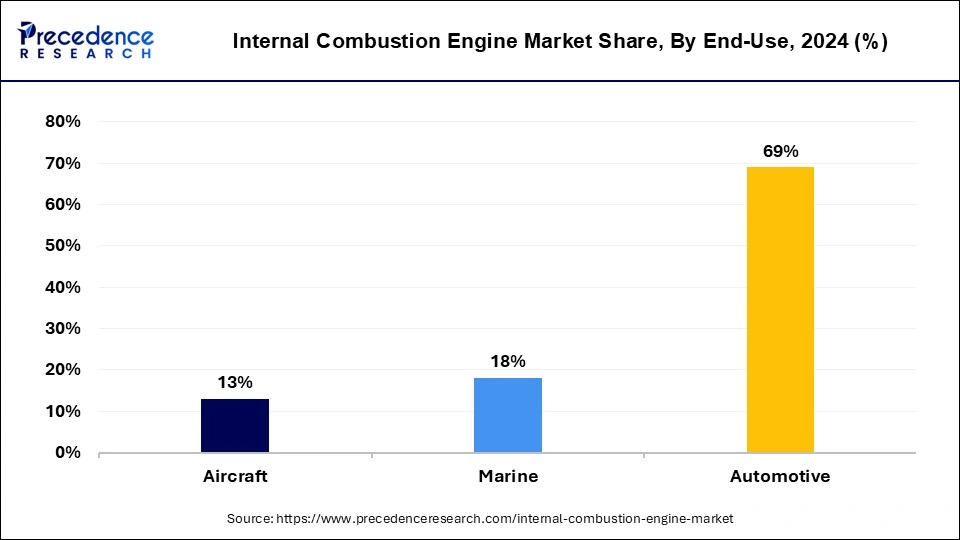
The aircraft segment is expected to grow significantly in the internal combustion engine market during the forecast period. The growth of the segment is attributed to the robust growth of the aviation industry worldwide. Aircraft used for defense, tourism, logistics, and others require high-performing internal combustion engines. The rising focus is on lightweight, compact design and various technological advancements, including multi-fuel capability that improves fuel mileage. Thereby driving the segment’s growth.
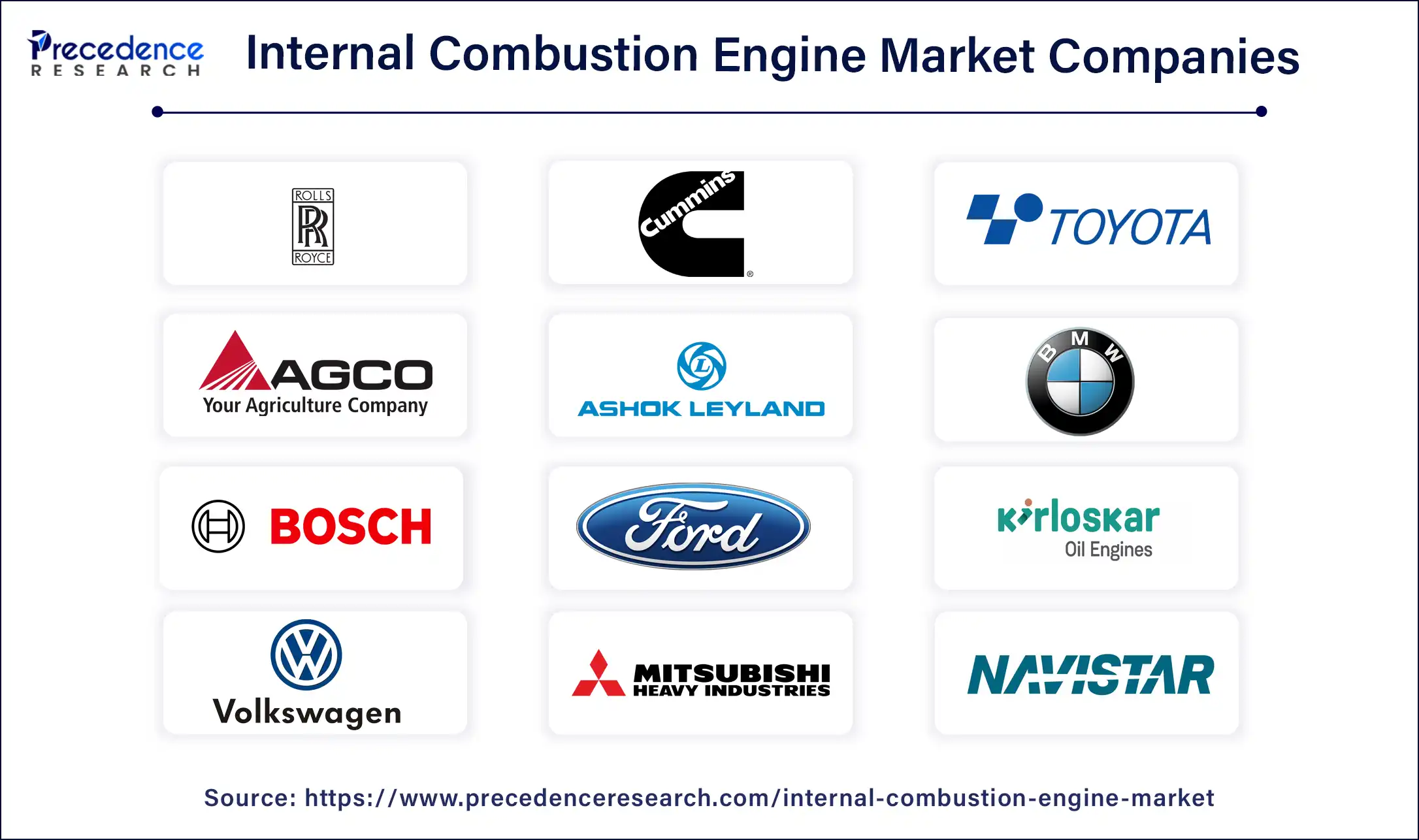
By Fuel Type
By End-use
By Geography
For inquiries regarding discounts, bulk purchases, or customization requests, please contact us at sales@precedenceresearch.com
No cookie-cutter, only authentic analysis – take the 1st step to become a Precedence Research client
January 2025
December 2024
August 2024
March 2025